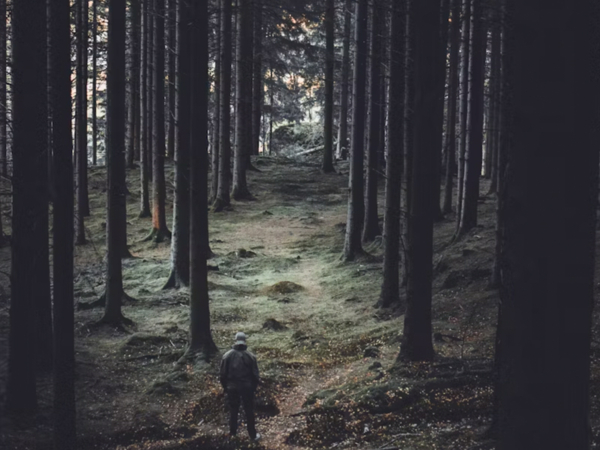
Photo Credit: Axel Holen on Unsplash
Genesis
Attending the Great Mother-New Father conference* for several decades leads to a life of layered richness. One layer is theme: originally led by Robert Bly’s* interest in exploring a paired theme and story. The Story and the embedded Theme is the foundational layer. The archetypes in the story are another layer. And a group of conference friends discussing the story, the theme, the archetypes, and their presence in the world are the richest layer of all.
The Hunter archetype came up because excellent poet George Burns* shared his Ohlone Man, a poem about a bow hunter. Any skilled hunter becomes part of the landscape, blending in. This hunter over time becomes a deer. The poem ends:
One day he notices a man holding skin, hoof, and bow,
then feels a searing ember in his heart, sees his own deer hooves draped over
the man’s back as children’s voices rise, shouting at his return.
The poem resonated with me. I responded with images from my own experience hunting food for our dinner table with my husband. And that led George and others in the electronic feed to ask I share what I knew about hunting and the Hunter archetype.
Archetype of the Hunter
I went hunting for what I knew, uncovering uncollected, unfocused treasures. I am going to write about a few of them in this and other 2025 blogs. Please don’t twitch and run for cover. Our collective and moral judgement often fails us on the Hunter archetype.
Many of us, if we think about hunting at all, have images of testosterone-ridden males driving their huge trucks over a pristine landscape to slaughter innocent animals with big guns. I once heard a rifle described as a penis extension; the person then said, “And if women were designing weapons they would encircle the prey.”
I’ve experienced this hunter stereotype. One out-of-state hunter interfered in our family dawn deer hunt, bouncing down the opposite hillside in his big truck, trying to drive the deer we were stalking toward us. We stood up in protest. The deer bounded away. Our conversation with the driver didn’t go well; he simply could not understand how we saw his “trying to help you” action as interference in our hunt. In future years we and many other local hunters shifted to bow hunting, a licensed season that precedes the general one.
I hope we can set aside cultural distortions and explore what I found on my very successful hunt for figures and stories about the Hunter Archetype. As a teaser of the riches to come: the next blog will be about the Greek Goddess Artemis, and an Equinox blog about a Shakespeare play we misunderstand because of a lack of hunter knowledge. Please choose to come along on these hunts.
Changing the Original Stories
The stories come down to us through the trained oral memories of our ancestors. As the world became more paper-pen literate the stories were written down. Collections were made or we would have lost the encapsulated wisdom of centuries of experience. We might have lost the collection books but they were published as “children’s stories.” Then our time found these stories “too violent” or “children shouldn’t know about that” or “wicked.” In our time some authors rewrote the stories. I was raised on the Grimm Brothers, Scottish and Russian and any other collection my mother could find. She believed a child needed to grow up knowing how to recognize dangerous situations and rescue themselves. I believe that also and for adults as well.
Even the Grimm Brothers rewrote the stories. Little Snow White, for example, was originally published in 1812 and “the wicked queen” is her mother, the same mother that wishes for a child “white as snow, red as blood, black as ebony.” The Grimm Brothers changed mother to “stepmother” seven years later in the 1819 edition. Anyone who grew up with a jealous mother was less protected with that change, and stepmothers became so suspicious that when my father remarried after my birth mother died, my greatly loving and lovable stepmother worried about how I felt about stepmothers, explaining “they are wicked, you know.”
The oral storyteller told to a community, and often a story was told to laughter with the people throwing in lines. Walt Disney lightened the stories into cartoon entertainment. Some still judge the original stories as full of violent detail.* Our ancestors’ lives were violent, and these stories are about how to survive. Perhaps as we become aware that ours is a time of uncovering incest and abuse, racially-based imprisonment, torture, global genocide, profit over planet health (etc.) we will be tougher, learn to cope with the stories as they have come down to us, and recover the ancestral knowledge.
Robert Bly’s book Iron John: A Book About Men* selected one Grimm Brothers’ tale which helped men recover the Wild Man archetype. Their spouses and lovers noticed a change in these men; as they integrated the archetype, they often became more engaged with their inner life, their feelings, and less engaged with needing to be a dominant figure or judging themselves for being “weak.”
It was the early years of the Women’s Liberation Movement and, much to Robert Bly’s distress, the book came under fire from that group – they didn’t want “the wild man.” Some of these women, whose cause and intent was just, embodied the behaviors they were asking men to leave behind. Many conversations at the Great Mother Conference during these years explored what we were learning. But we did not study the Hunter Archetype. The Wild Man is in the Hunter, and the Hunter in the Wild Man, but the Hunter Archetype holds its own presence.
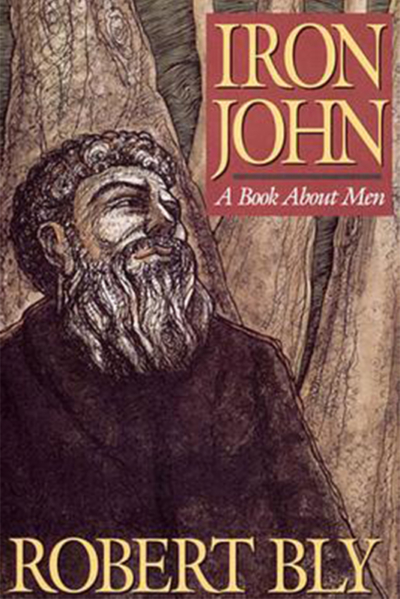
The Hunters in Snow White, the Grimm Brothers Collection*
The link to the story as first written down (and later versions) is below. If you haven’t read it or only know the Disney version, I recommend remedying that. This story is told with humor and audience participation (especially the dwarves’ lines; Disney held true to this version). Comedy is frequently where serious truth telling occurs and the bitterness dissipates in the laughter.
For our purposes the antagonist is Snow White’s mom. She has a magic mirror she asks every day to confirm she is the “fairest in the land.” All goes well until the day the mirror names her daughter instead. The Queen yields to her envy, and demonstrates for us the megalomaniacal behavior of destroying anyone who doesn’t agree with the version of reality that aggrandizes the asker. She doesn’t break the mirror; she makes sure it will tell her she is the fairest by destroying her competition. The mirror might be considered a hunter as it seeks information, but it’s more like a neutral news teller reporting truth. (I hope we haven’t broken the template for these kinds of mirrors.)
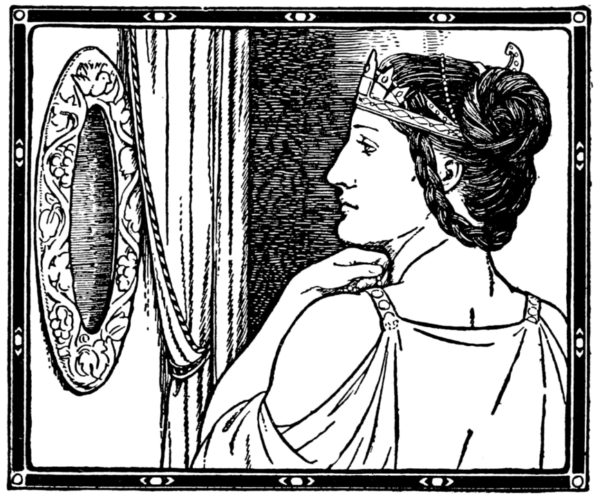
There are two hunters in the tale.
- The Queen hunting in the mirror for any competitor
- The Hunter: works for the queen, does what is told to do up to a point
- The Queen hunting Snow White, camouflaged, using bait
Here is the passage in Little Snow White about the Hunter.
From that hour on whenever she looked at Snow-White her heart turned over inside her body, so great was her hatred for the girl. The envy and pride grew ever greater, like a weed in her heart, until she had no peace day and night.
Then she summoned a huntsman and said to him, “Take Snow-White out into the woods. I never want to see her again. Kill her, and as proof that she is dead bring her lungs and her liver back to me.”
The huntsman obeyed and took Snow-White into the woods. He took out his hunting knife and was about to stab it into her innocent heart when she began to cry, saying, “Oh, dear huntsman, let me live. I will run into the wild woods and never come back.”
Because she was so beautiful the huntsman took pity on her, and he said, “Run away, you poor child.” He thought, “The wild animals will soon devour you anyway,” but still it was as if a stone had fallen from his heart, for he would not have to kill her.
Just then a young boar came running by. He killed it, cut out its lungs and liver, and took them back to the queen as proof of Snow-White’s death. The cook had to boil them with salt, and the wicked woman ate them, supposing that she had eaten Snow-White’s lungs and liver.
This hunter is obedient to authority up to a point of choice, capable (works for royalty, kills the boar), clever enough to make the substitution, and develops a discerning heart. I titled the blog “Discerning or stone heart?” because of this line:
…still it was as if a stone had fallen from his heart, for he would not have to kill her.
The Queen as Hunter is relentlessly evil, clever, and a fair actress to play three different roles so convincingly she kills Snow White three times.
The story gives us the detail that Snow White is seven years old when the mirror calls her “fairest” in the land. One “lesson” in the story: Snow White is being naïve about the evil queen, an enemy she knows intimately and is warned against continually. I imagine the storyteller asking “Shall she open the door?” and people saying “No”, then “Will she open the door?” and people saying “Yes” and shaking their heads, glancing at their children to see if they are getting the point.
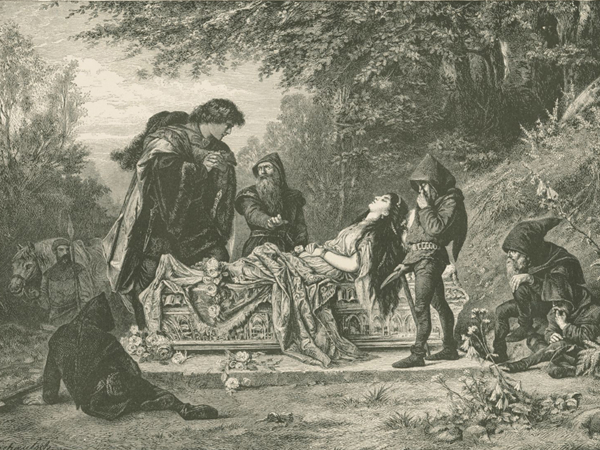
The Prince Arrives, the Miriam and Ira D. Wallach Division of Art, Prints and Photographs: Picture Collection, The New York Public Library.
Then there is the lesson that when your enemy attacks your friends can help you recover: tell them what happened! And, if the wicked queen has poisoned you so badly you feel dead inside, the Prince – the masculine active part of you – will protect you until the poison is dislodged and you can spit it out. Hopefully the storyteller communicates that even if you feel you might die, you won’t.
The story doesn’t tell us what the Queen does to the Hunter. I like to think he has long since begun to hunt elsewhere. There is a current movie on Netflix called Snow White and the Huntsman where the “hunter sent to capture an escaped Snow White instead becomes her mentor in a quest to defeat the wicked queen.” It’s a brilliant telling with spellbinding imagery.
The Hunter in Us
We are born to a time that needs people hunting new answers to old and new problems and questions.
There is a story about Solomon* who will become known as “the Wisest King of all.” God gives him the option to ask for anything. Solomon replies “Give your servant therefore an understanding mind to govern your people, able to discern between good and evil.” Solomon was a hunter of truth. So must we be.
Wise Ones, help me find the Hunter in me:
Give me a wise and discerning heart.
Train me in the skill of Truth Telling.
Help me chooses right action in wrong situations.
Comments please:
Engage in the third gift of the conference: the conversation. I appreciate your emails and keep them coming. Consider, however, that your brave comment on the blog would enrich all.
*References
- Great Mother New Father Conference: https://www.facebook.com/profile.php?id=61567246681087
- Robert Bly, poet. https://www.robertbly.com/
- Poet George Burns: https://www.thepoetryofgeorgeburns.com/works
- Disney and the gory details of the original stories: https://www.huffpost.com/entry/the-real-story-behind-eve_n_4239730
- Robert Bly, Iron John. Iron John: A Book About Men is a book by American poet Robert Bly. It is an exegesis of Iron John, a parable belonging to the Grimms’ Fairy Tales (1812) about a boy maturing with help of the wild man.
- German folklorists Brothers Grimm
- Solomon: Old Testament in 1 Kings 3:9-10

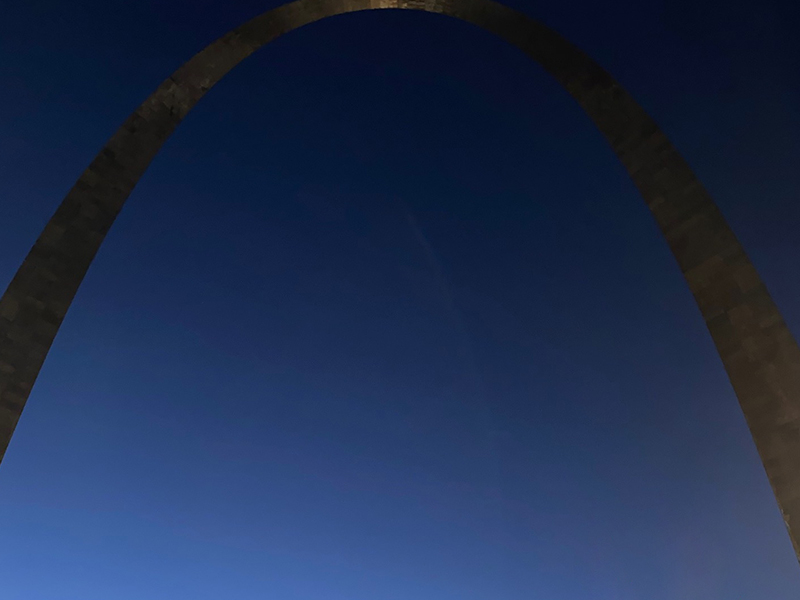
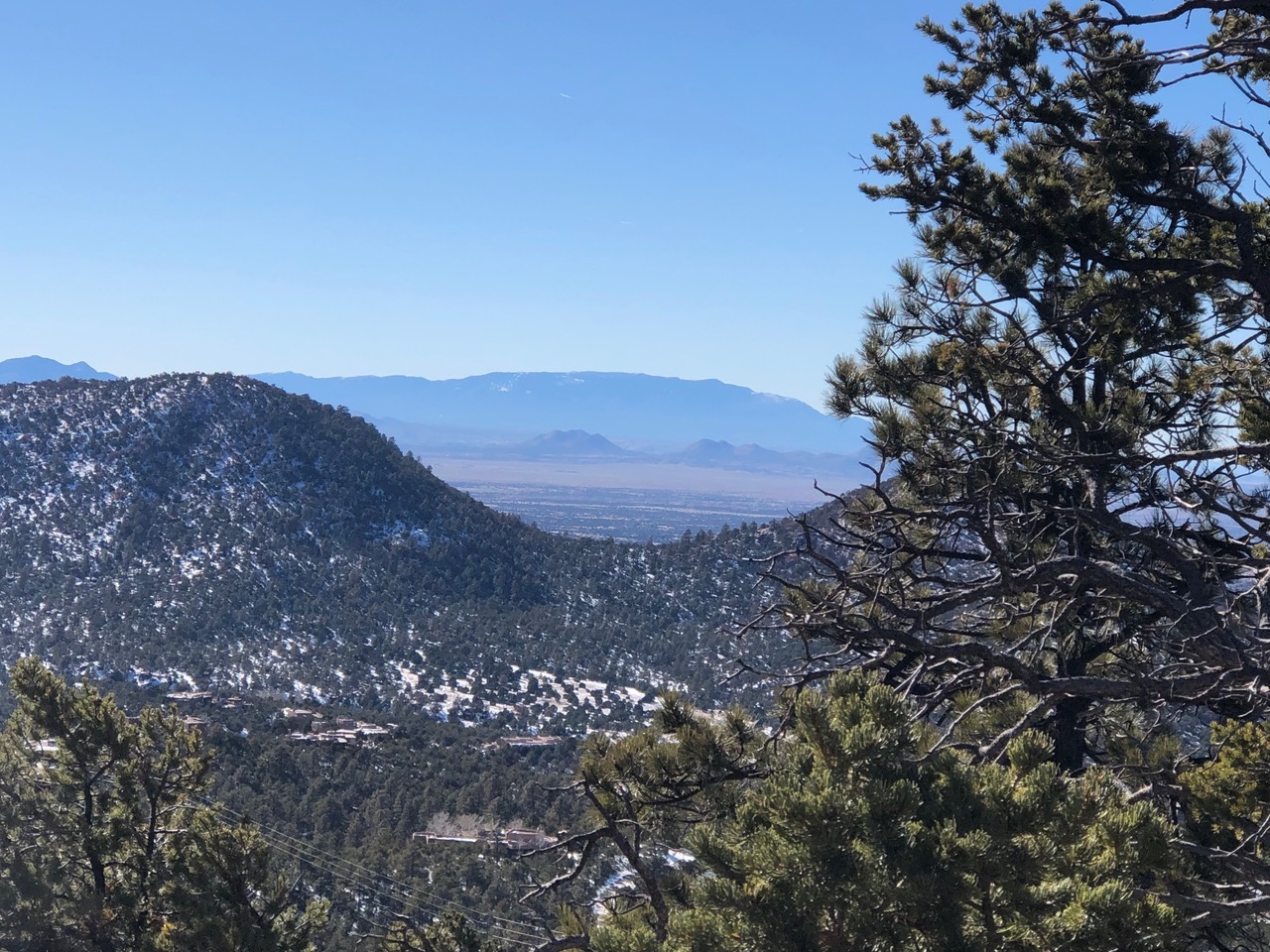
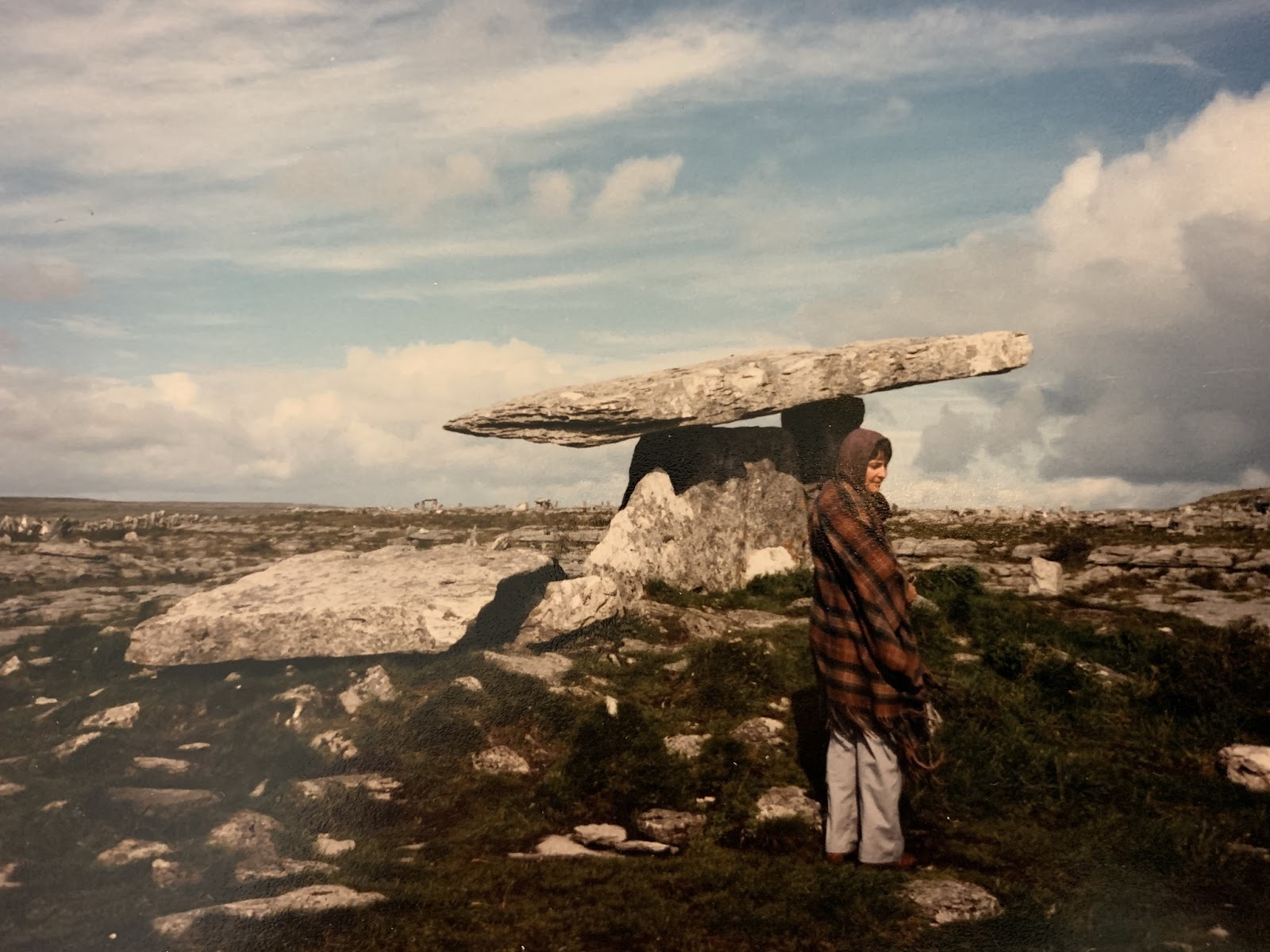
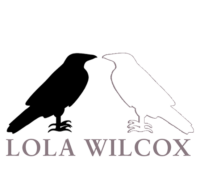
Lola, Many thanks for holding up ‘Snow White’. I loved the image shared, and would love to see more of them related to this story. I loved the multiple hunter perspectives within the story, having never thought of the mother figure as anything other than evil – jealous evil is even more personally dangerous, and something I now recognize more clearly. The asterisks confused me until I got to the bottom and found they referred to sources, and now I know. The final prayer, which I am assuming you have written, was one I will post on the refrigerator to support me in the days ahead. Days for which I am cultivating calmness and equanimity so that I might discern what there is — what I am called — to do, rather than sacrifice myself to unregulated nervous system chaos that can be initiated by evil action. Thank you! Looking forward to the next chapter. Thanks to George Burns for his inspiration of this track of thinking.
Victoria, I’m pleased this blog was useful to you in both story and personal applications. Yes, the final prayer is my composition, and it makes me very happy that it’s posted on your refrigerator! May it help you cultivate calmness and equanimity to discern the direction you are hunting. The old word “Ward” means to protect by not letting the arrows of evil penetrate your sphere of being. The Archangel Michael is the Protector energy, and an old warding act is to wrap yourself up in that blue energy by praying
Lord Michael Before, Lord Michael Behind,
Lord Michael to the right of me, Lord Michael to the left of me,
Lord Michael Above, Lord Michael, Below,
Lord Michael, Lord Michael wherever I go.
You can change out some of the Lord Michael’s to other holy beings if you choose; the first version we know of (Sumeria) lists various gods/goddesses.
To the asterisks comment – Thank You. The blog designer is Desirae of Three Track Mind, and she and I often discuss about how to indicate references. Your comment is an arrow in our shared quiver of discussion points.